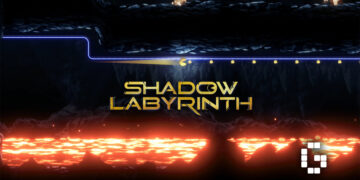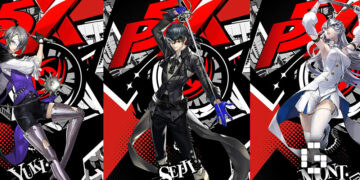Look, I’m going to be level with you- YuGiOh and it’s terminology are borderline nonsensical if you’ve never played a TCG. Thanks to the high-stakes nature where every card could be the card that ends the game for you, it’s got some strict rulings attached to it- meaning you’ll want to make sure every part of the card’s syntax lines up.
This can effect all levels of play, from simple things like making sure your card matches its archetype to even more advanced stuff, like sneaking around certain card abilities to secure your board. But with so many effects, how do you even approach it all?
Getting Your Ducks In A Row
One of the most common ones you’ll see is about the actual syntax of each of card. Basically, your card effect can usually be broken up into three parts- a condition, a cost, an effect. Think of it like this:
[1]You can detach 2 materials from this card, then target 1 Special Summoned monster your opponent controls in face-up Attack Position; [2]attach it to this card as material. [3[You can only use this effect of “Number 101: Silent Honor ARK” once per turn.
This is the effect for Number 101: Silent Honor ARK, with numbers added by me to show how the effect is split up. It should be noted that [1] is the cost, [2] is the effect and [3] is the condition, though the condition can also be at the front of the effect.

It’s important to recognize what’s what- if a card is negated (such as via hand trap), its cost is still paid. For example with Mask Change II, you still have to discard a card even if it’s negated.
Similarly, you’ll want to pay attention to the triggers of card effects- Dark World cards like Grapha, are very particular about how they got discarded:
If this card is discarded to the GY by a card effect: Target 1 card your opponent controls; destroy that target…
What this basically means is that they cannot be discarded by cost. So in this case, you wouldn’t be able to run a HERO/Dark World Deck off of cards like Mask Change II or Super Polymerization since those won’t trigger the effects.
You Don’t Have To Destroy Someone To Send Them To The Graveyard
If you’re currently struggling against the oppressive forces of Chaos MAX or Destroy Phoenix Enforcer, you’re probably familiar with this next part. Chaos MAX has a particularly annoying set of defenses- one, it can’t be targeted, and two, it can’t be destroyed by card effects.
Similarly, Destroy Phoenix Enforcer has the pesky habit of never quite staying dead. Whenever it’s destroyed and sent to the Graveyard, it seems to find its way back to the field, the rascal.
So let’s start with Targeting- Targeting is exactly as it says on the tin: many cards will have effects that tell you to target one monster. That isn’t blanket immunity though, quite the opposite- various effects get around this by just never targeting, blanket destroying cards. You’ll see this in spells like Raigeki or Forbidden Droplet, or monster effects like Evilswarm Exciton Knight and Elemental Hero Absolute Zero. The idea is that while a monster might be immune to being singled out, it can’t do anything if the board is just wantonly cleared out.

So you’ve found one loophole to get rid of the big blue eyesore, but not quite- remember, it also can’t be destroyed by card effects. Destroy is another key word in YuGiOh- not every time a card is sent to the graveyard is a destruction. Cards like Super Polymerization bypass this by using the monsters as materials as a fusion- sending them to the graveyard, but not triggering any Destroy-trigger effects. Quite possibly the most egregious use of this is every Xyz player’s favorite card: Divine Arsenal AA-Zeus Sky Thunder- its effect sends every other card to the graveyard, not triggering any destruction effects.
There’s also the case of tributing- a common set of monster-removal cards include Lava Golem and any Kaiju. These cards allow you to tribute opponent’s monsters to summon one on their side of the field. Note that tributing an opponent’s monster is a cost, not an effect- the effect is usually summoning a giant sea turtle to their side of the field, so this won’t count as being destroyed by a monster’s card effects.
Aside from getting rid of Chaos MAX, this is also great for getting rid of Destroy Phoenix Enforcer, since sending it to the graveyard this way means negating its respawn- protecting you in future from ridiculous DPE shenanigans.
The Value Of Depth
This is far from the bottom of the barrel with YuGiOh effects. There’s things like continuous effects vs activated effects, the various flavors of once per turn and more. But the fact you *do* need to scrub through all the text in a YuGiOh card is great because, like I said, it’s what allows the downright bonkers effects of these cards to exist in some kind of balance.
It’s far from the only card game to do this- Magic: The Gathering loves its programmer-speak so much that a bunch of effects are just summarized as single keywords to save space on a card. But the idea is that putting this much thought into your semantics allows you to reach that much higher with your effects- Vision HERO Trinity, for example, becomes a powerhouse but it’s because of its condition that you can’t use it to beat your opponent on the first turn.

Of course, it has its downsides- this kind of semantic nitpicking is what earns card games the urban legend of being secret lawyer recruitment tools. Worse still, someone may hear about how Mystical Space Typhoon destroys a spell card but doesn’t stop its effect and simply decide YuGiOh has too much terminology and just, well, bail.
But I promise you, it’s all worth it. Just like learning the basics of frame data in a fighting game leads to more enjoyment down the line, so too is learning how card effects work on a mechanical level going to lead to you enjoying more duels.











![[EXCLUSIVE] Creative Masterminds from Gearbox Software Reveal What Makes Borderlands 4 Worth the Wait](https://cdn.gamerbraves.com/2025/07/Borderlands-4-at-Bilibili-World-2025_Interview_FI-360x180.jpg)




![[ASIA EXCLUSIVE] Bringing Back a Classic: Inside the Making of FINAL FANTASY TACTICS – The Ivalice Chronicles](https://cdn.gamerbraves.com/2025/06/FFT-Ivalice-Chronicles_Interview_FI2-360x180.jpg)













